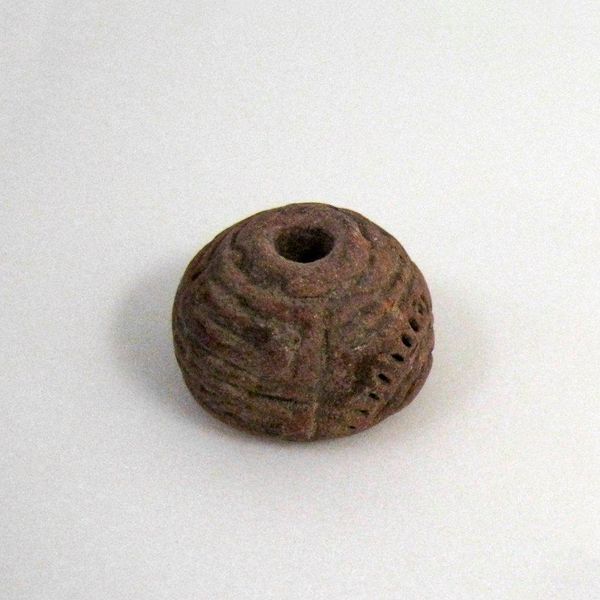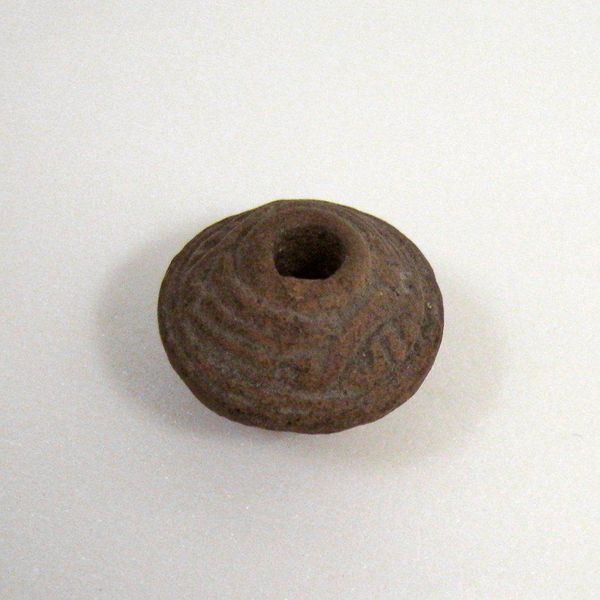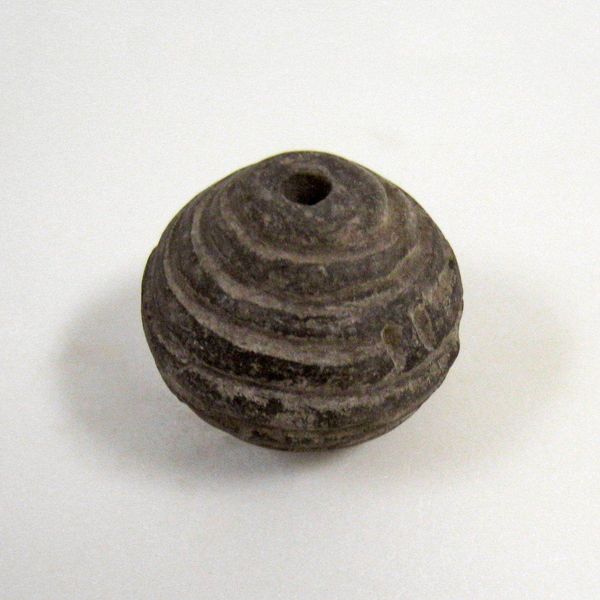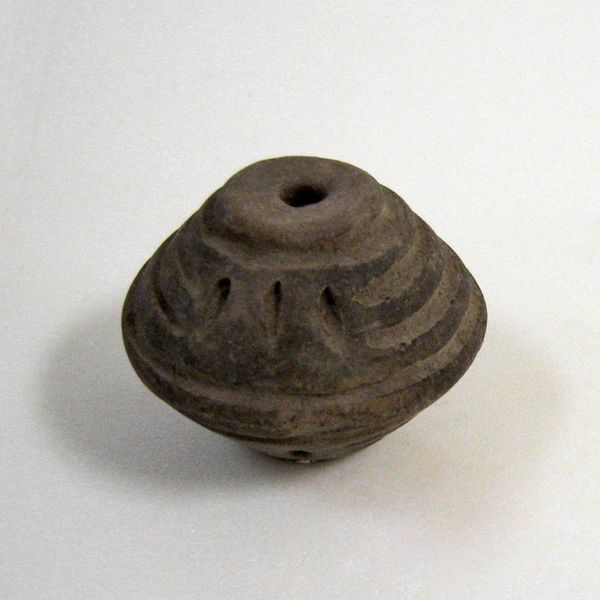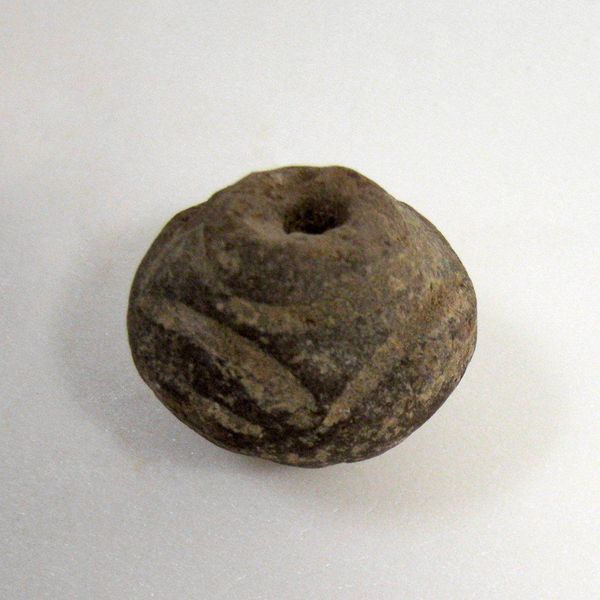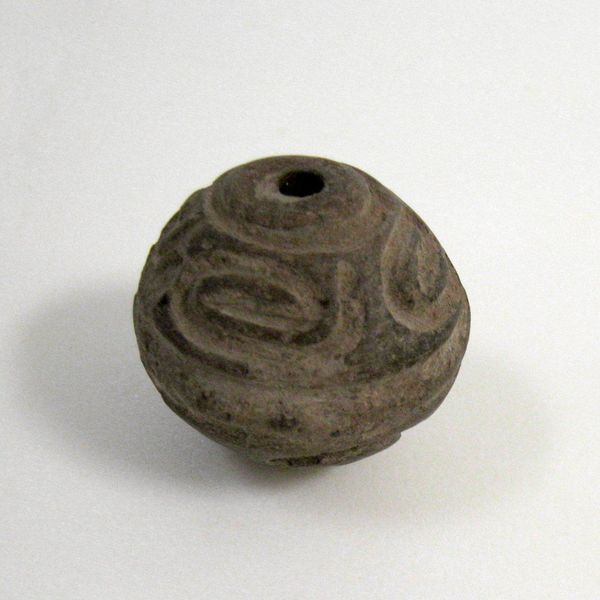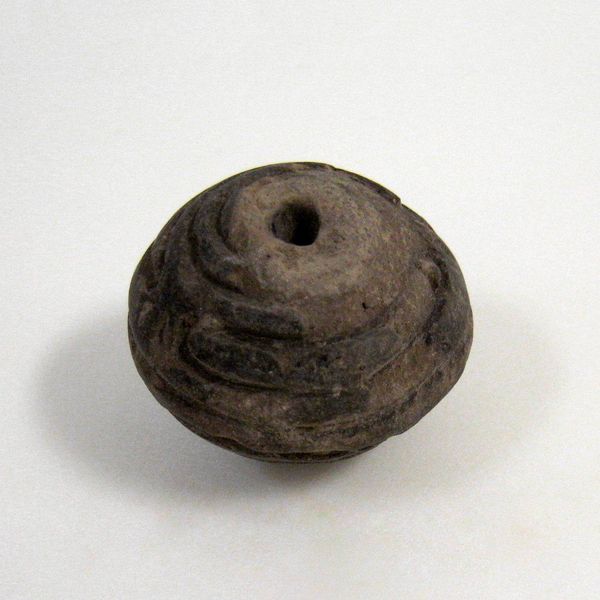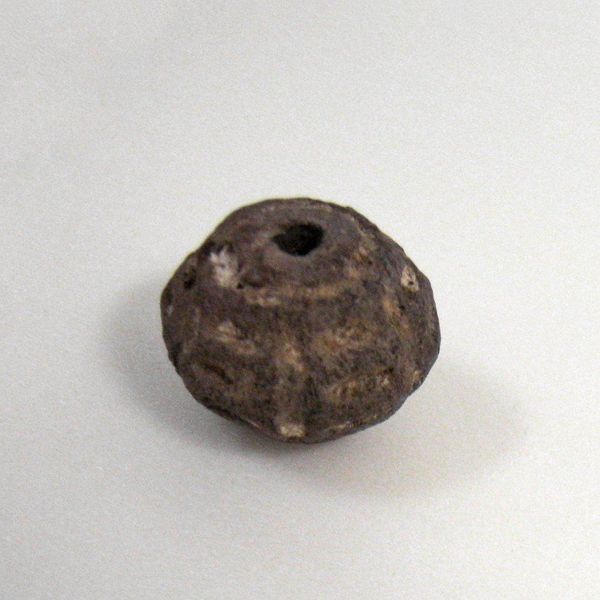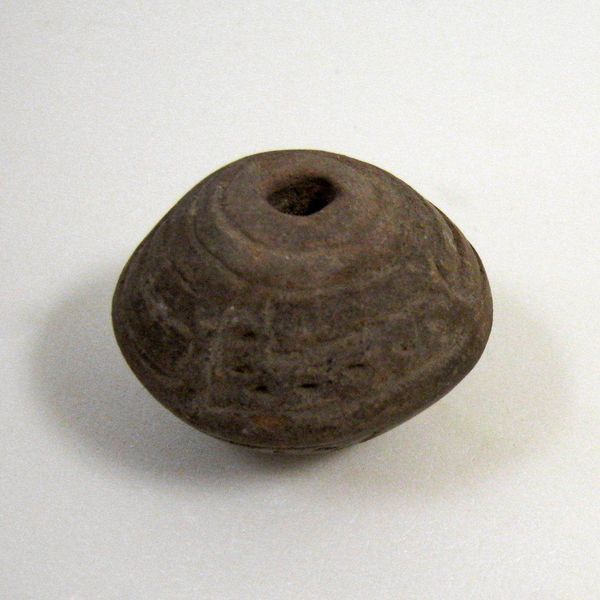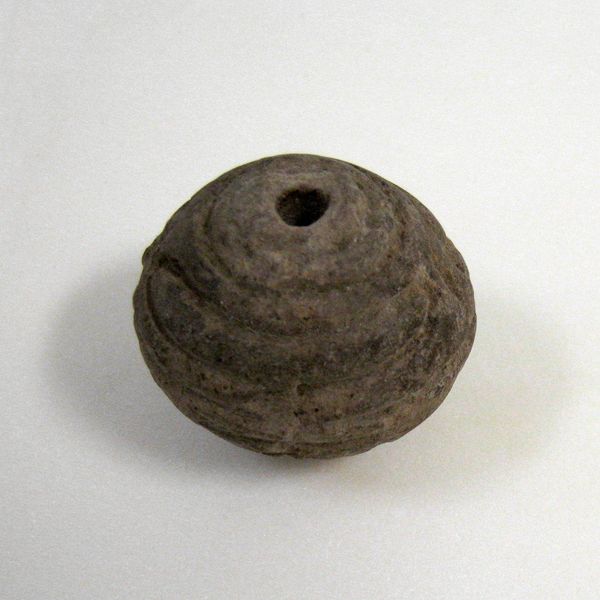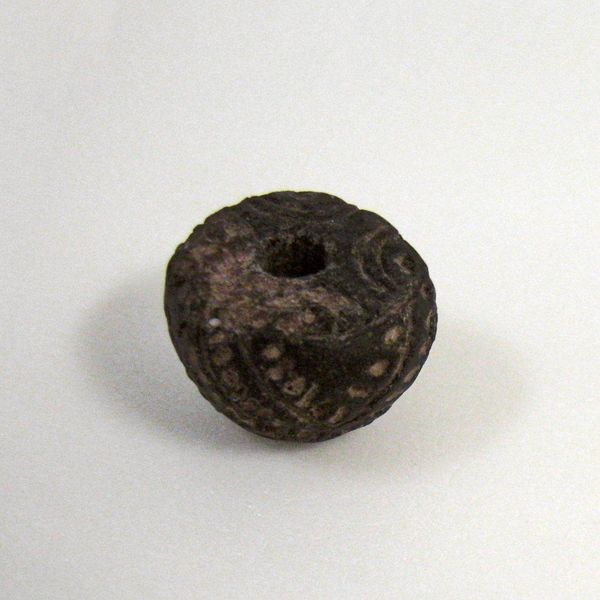
ceramic, earthenware
#
sculpture
#
ceramic
#
earthenware
#
geometric
Dimensions: 3/4 x 1 in. (1.91 x 2.54 cm)
Copyright: Public Domain
Curator: Our next piece is an earthenware spindle whorl, a small ceramic object currently held at the Minneapolis Institute of Art. Its precise origin and date are unknown. Editor: My first thought is how deceptively simple it looks! This small sphere, barely larger than a marble, has a profound connection to something fundamental: cloth. Curator: Exactly. This is not merely decoration; it’s a crucial element of the hand-spinning process, where fibers like cotton or wool are twisted to form thread or yarn. Editor: What intrigues me is considering who might have made it. Who was spinning these threads? The work often fell to women. Was this made by them as well? How much would something like this mean in their daily struggle for subsistence? Curator: The craftsmanship is significant. Look closely; you'll notice concentric circles decorated with geometric patterns: dashes, bars, dots around the exterior. Consider the knowledge needed to create and fire ceramics! Each shape and its arrangement show attention to detail within an object whose primary use would have been completely practical. Editor: It's such a tangible link to pre-industrial processes. And while its specific cultural background is a mystery, we should understand these small whorls in their historical, perhaps colonial context, knowing they've facilitated craft for Indigenous cultures. Curator: Right. They represent labor and the ingenuity of craftspeople. To hold this whorl is to consider material origins and also imagine the garments woven from the spun material, the textiles and garments circulating through economic trade routes. Editor: It’s a poignant reminder that even the most seemingly mundane object can reveal complex networks of social practice, cultural significance, and hidden histories. We need to examine the art, but never divorced from questions of labour, gender, and socioeconomic factors in its interpretation. Curator: Precisely. This spindle whorl, though unassuming, reflects centuries of innovation in material production, and its enduring artistry connects us directly to those histories. Editor: Ultimately, this little whorl invites us to rethink our understanding of utility, value, and who decides what’s worth preserving or studying from the past.
Comments
No comments
Be the first to comment and join the conversation on the ultimate creative platform.
